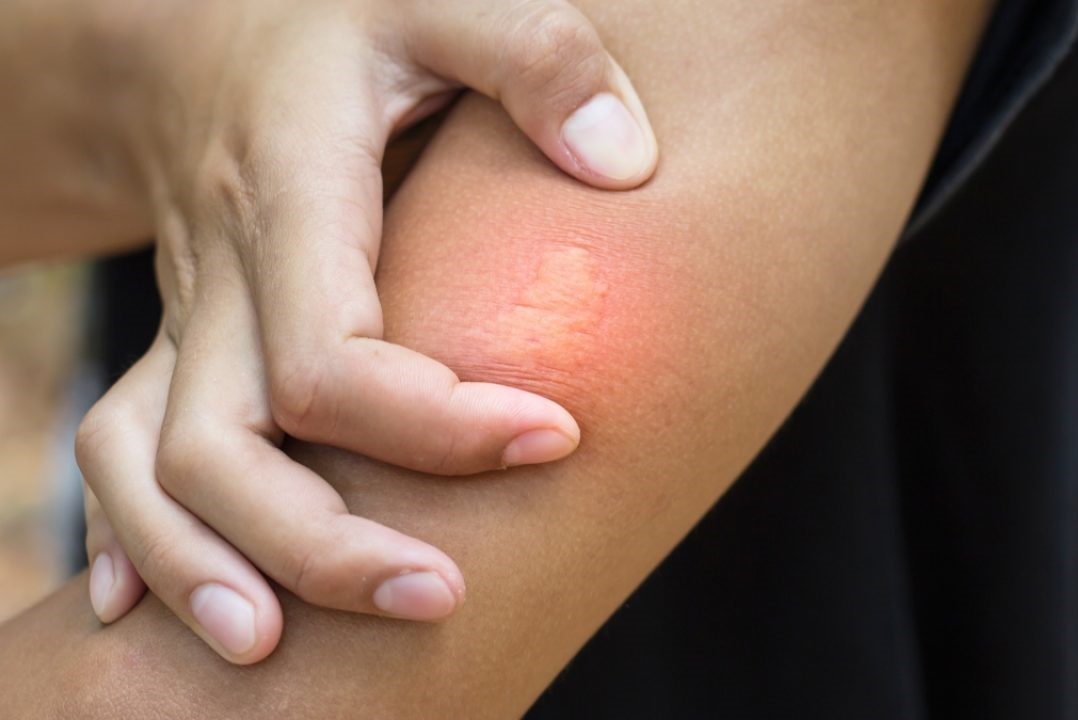
Wasp sting and anaphylactic shock: what to do before the ambulance arrives?
Wasp sting and anaphylactic shock: Before the ambulance crew arrives, the person can do two important things on his or her own, i.e. try to extract the sting by gently ‘scratching’ with the fingernail at the sting site but being careful not to break the ‘sac’ in which there may still be venom; he or she can disinfect by applying a little ammonia with cotton; he or she can try to slow down the absorption of the venom by, for example, placing ice on the sting or tying a string around the affected limb
Important: those who know they are allergic to wasp stings or other similar insects (such as bees, hornets, known as hymenoptera) should always carry an adrenalin ‘pen’.
This is a self-injector that allows a quick, effective and safe injection of the right dose of adrenaline.
Adrenalin can indeed save lives in such cases, but only if administered in the right amount (1 mg taken to 10 ml with saline solution).
TRAINING IN FIRST AID? VISIT THE DMC DINAS MEDICAL CONSULTANTS BOOTH AT EMERGENCY EXPO
In the event of anaphylactic shock from a wasp sting, or even just the suspicion of anaphylactic shock:
What to do:
- Alert medical help immediately without wasting time, perhaps by searching for information on the Internet!
- Although the actual therapy is the sole responsibility of the doctor, it is good for the rescuer to be familiar with the broad outline of what to do. The life-saving drug during anaphylactic shock is adrenaline (or epinephrine) administered intravenously, preferably as a slow, continuous infusion. It is combined with electrolyte or colloidal infusion solutions to compensate for peripheral vasodilation, hypotension and leakage of intravascular fluids into the tissues. Additional drugs may be necessary depending on the functional impairment of the affected organs.
- While in milder cases, the combined administration of adrenaline and antihistamines (which, like corticosteroids, inhibit the activity of the vasoactive mediators involved in shock) is generally sufficient, in more severe cases it is necessary to ensure the maintenance of airway patency, resorting to oxygen therapy or surgery if necessary.
- When anaphylactic shock is suspected, while waiting for medical help, the patient should be placed in the anti-shock position → supine with the legs raised about 30 cm (e.g. with the help of a chair). If possible, the patient should be positioned so that the head is below the knees and pelvis. This position, known as Trendelenburg, is particularly useful because it promotes venous return to the vital organs (heart and brain) by the simple effect of gravity.
While waiting for medical help, the person suffering from anaphylactic shock must be reassured and, as far as possible, comforted about their condition and the arrival of the ambulance.
RESCUE RADIO IN THE WORLD? VISIT THE EMS RADIO BOOTH AT EMERGENCY EXPO
What NOT to do if you suspect anaphylactic shock
If anaphylactic shock is caused by a bee sting, the stinger should not be extracted with tweezers or your fingers, since compressing it would increase the release of the venom; rather, it is advisable to scrape it off with a fingernail or a credit card.
However, recent studies have shown that what really counts is the speed of the intervention; the more time that elapses between the puncture and the extraction of the venom, the greater the release of the venom; according to these studies, it is therefore not so much the extraction technique that is important, but rather the speed of the intervention.
The anti-shock position should not be adopted if trauma to the head, neck, back or legs is suspected.
If the victim complains of breathing difficulties, do not place elevations or pillows under the head, nor administer pills, liquids or food; these operations, in fact, seriously risk aggravating the obstruction of air passage in the airways that typically accompanies episodes of anaphylactic shock.
Read Also:
Emergency Live Even More…Live: Download The New Free App Of Your Newspaper For IOS And Android
What Should Be In A Paediatric First Aid Kit
Ukraine Under Attack, Ministry Of Health Advises Citizens About First Aid For Thermal Burn
Electric Shock First Aid And Treatment
RICE Treatment For Soft Tissue Injuries
How To Carry Out Primary Survey Using The DRABC In First Aid
Heimlich Maneuver: Find Out What It Is And How To Do It
10 Basic First Aid Procedures: Getting Someone Through A Medical Crisis
Wound Treatment: 3 Common Mistakes That Cause More HARM Than Good
Most Common Mistakes Of First Responders On A Patient Affected By Shock?
Emergency Responders On Crime Scenes – 6 Most Common Mistakes
Manual Ventilation, 5 Things To Keep In Mind
10 Steps To Perform A Correct Spinal Immobilization Of A Trauma Patient
6 Common Emergency First Aid Mistakes
Does The Recovery Position In First Aid Actually Work?
Insect Bites And Animal Bites: Treating And Recognising Signs And Symptoms In The Patient
What To Do In Case Of A Snakebite? Tips Of Prevention And Treatment
Wasps, Bees, Horseflies And Jellyfish: What To Do If You Get Stung Or Bitten?


